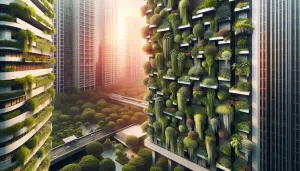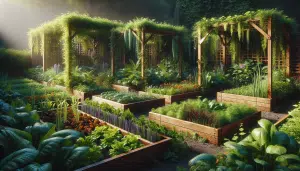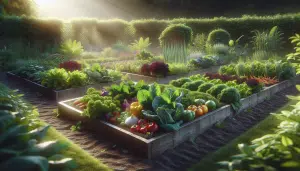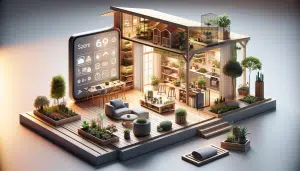What Happens When You Start a No Grass Front Yard
Lily Carter September 22, 2025
Curious about transforming a traditional front yard into a vibrant, no grass oasis? Discover unique landscaping solutions that enhance curb appeal, conserve water, and simplify maintenance. This guide explores natural ground cover, creative hardscaping, and climate-friendly plants for a fresh approach to outdoor living.
Benefits of Adopting a No Grass Front Yard
Many homeowners are rethinking the way they approach lawn care by exploring no grass options. The idea is straightforward. Eliminate traditional turf and unlock new ways to create a welcoming environment with less water, lower costs, and greater biodiversity. With sustainable landscaping becoming more essential in modern communities, a no grass front yard is now seen as a forward-thinking choice. The space can be designed using native plants, gravel, and perennial groundcovers that don’t need mowing, fertilizing, or constant watering. Not only does this help conserve valuable resources, but it also encourages pollinators such as butterflies and bees. By reducing your reliance on traditional lawn services, these alternatives promote independence and a greener lifestyle right at your doorstep.
Another powerful benefit of going grass-free lies in water conservation. Maintaining a healthy lawn requires significant amounts of irrigation, especially in hotter climates. According to environmental organizations, grassy lawns can be the single highest source of outdoor water use in many homes. By choosing drought-tolerant options like gravel, mulch, and low-water ground covers, households can sharply reduce their monthly water bills and contribute positively to broader conservation efforts. In many states, utility providers and cities even offer rebates or incentives for homeowners who swap out thirsty grass for sustainable alternatives, creating further motivation for change. Explore these opportunities to combine personal savings with positive environmental impact.
Adopting a no grass landscape also streamlines yard maintenance. Lawns demand weekly mowing, edging, and seasonal fertilization, which translates to time, effort, and ongoing expenses. Alternatives such as native plants and creative hardscaping require less effort and fewer chemicals, reducing air and noise pollution caused by petrol-powered mowers. Attractive options like stone pathways, decorative pebbles, or paver patios provide both visual and functional enhancements to the space. Homeowners may find themselves with extra weekends and a more enjoyable yard that feels natural rather than managed. Ultimately, these solutions can transform stressful outdoor chores into engaging, creative projects that value beauty and function over conformity.
Popular Alternatives to a Traditional Lawn
No grass front yards are remarkably diverse in their design and plant options. Some of the most popular alternatives include groundcovers like creeping thyme, sedum, and clover. These selections are chosen for their beauty and resilience, thriving with less water and rarely needing trimming. They form dense mats that outcompete weeds while offering soft color, texture, and an inviting habitat for beneficial insects. Hardy groundcovers often bloom, filling spaces with life and subtle fragrance.
Hardscaping is another cornerstone of the grass-free approach. Decorative gravel, permeable paving stones, and wood chips offer a crisp, modern aesthetic that requires almost no upkeep. They can be arranged to create pathways, gathering areas, or accent features around naturalized plants and garden beds. Rocks and boulders add dimension and structure, complementing low-maintenance shrubs or native grasses. Selecting materials that reflect your home’s style will make the yard feel intentional and unique while providing long-lasting appeal. Many landscape designers now recommend mixing hardscape and softscape elements to balance beauty with practicality.
Perennial gardens are a third favorite option. Instead of spreading turf, consider planting beds with drought-resistant flowers, ornamental grasses, and edible herbs. These plants can be grouped according to their sunlight and water needs to maximize efficiency and color. Pollinator-friendly choices like lavender, yarrow, and coneflower attract butterflies and bees, while edible selections such as rosemary or thyme supply fresh culinary ingredients. Perennial blooms return each year with minimal care, making the front yard not only more attractive but also more functional and dynamic throughout the seasons.
How to Plan Your Grass-Free Front Yard
The process of planning a no grass yard begins with evaluating your outdoor space. Shade patterns, existing trees, soil quality, and water access all influence which solutions will thrive. A well-executed design considers layout, focal points, and movement—think about how you want to use the space. Would a winding flagstone path showcase the garden? Do you prefer defined seating areas for relaxation or entertaining? These choices shape your planting and hardscaping strategy.
Mapping out zones for groundcovers, hardscapes, and native plants results in better water efficiency and reduced maintenance. Raised beds or borders can add dimension and help organize plantings, ensuring each species receives the right light and care. Mulching paths and planting beds keep the soil moist and cool while reducing weed pressure. If you’re unsure where to start, consider seeking advice from landscape professionals, local master gardeners, or cooperative extension offices, which often provide free or low-cost guidance. Leveraging community expertise helps create a sustainable design tailored to your climate and needs.
Certain municipalities may regulate front yard landscaping. Before tearing up your turf, review local codes and HOA requirements—some neighborhoods require permits or specify minimum green cover. Many cities now support grass-free initiatives with incentives, but it’s important to confirm in advance. Once you’ve drafted a plan, source plants and hardscape materials from reputable nurseries or recycling centers. This approach supports local business, assures quality, and often provides regionally adapted plants more likely to thrive in your area. Thoughtful preparation leads to a yard you’ll be proud of every season.
Long-Term Maintenance and Care Considerations
One appeal of a no grass front yard lies in ongoing simplicity. With many traditional chores gone, most upkeep centers on occasional pruning, weeding, and refreshing mulch. Native and well-chosen drought-tolerant plants establish deep roots, making them more resilient through seasonal shifts. Annual mulching supports soil health and helps hold moisture for longer periods.
Understanding which plants may self-seed or spread is crucial in a grass-free landscape. Some ground covers, like vinca minor or creeping Jenny, can require periodic trimming to avoid overtaking beds or pathways. Mulched surfaces provide a natural, weed-resistant layer but may need topping up yearly to look their best. Keep an eye on hardscaped areas, as shifting stones or settling soil might require occasional repositioning or adding aggregate to maintain a tidy appearance. By handling these small seasonal adjustments, your yard remains fresh and welcoming.
Many homeowners discover that a grass-free landscape doesn’t mean eliminating all lawn equipment but does allow for less frequent and less intensive care. Lightweight cordless trimmers, hand shears, and simple rakes replace heavy mowers and petrol trimmers, making maintenance quieter and less polluting. Extra waterings may be needed during especially hot or dry periods—use drip irrigation or soaker hoses for efficiency. Overall, the result is a space that evolves gracefully with little intervention, freeing time for relaxation and creative gardening projects.
Environmental and Community Impact of Grass-Free Lawns
Switching to a no grass front yard has positive ripple effects across the environment. Reduced water consumption lessens pressure on local aquifers and reservoirs, a crucial benefit during times of drought. Lawns replaced with pollinator-friendly plantings support native species, including bees, butterflies, and songbirds, all of which play their part in ecosystem health. Natural habitats are restored where once monoculture lawns stood.
Fewer chemicals are needed in grass-free landscapes, translating to cleaner runoff and better soil quality. By choosing organic mulch and compost, the cycle of sustainable soil enrichment continues. Permeable surfaces such as gravel and paver gaps reduce stormwater runoff, helping local communities manage flooding and erosion. These design choices contribute to citywide sustainability goals and earn recognition for environmental stewardship.
Neighborhoods may see improved curb appeal and increased property values as more homeowners embrace naturalistic design. Grass-free yards display personal style, creating a welcoming atmosphere rather than a uniform look. Some local groups offer grants or host garden tours to encourage innovative gardening. By transforming your own front yard, you help inspire others and set new trends in outdoor living—all while making a real difference in water conservation and environmental health.
Simple Steps to Start Your No Grass Front Yard Journey
For homeowners ready to begin, the initial step is to decide which elements matter most—visual appeal, utility, water savings, or low maintenance. Mapping priorities clarifies design and installation decisions. Many start small, converting a section of the yard, testing plant varieties, or adding a path, before committing to a full transformation. Experimenting in stages allows you to see what works and evolves your outdoor space at a comfortable pace.
Native plants and eco-friendly materials may be sourced from local garden centers or plant swaps, offering budget-friendly options and expert advice. Collect ideas by visiting local demonstration gardens, consulting cooperative extension offices, or talking with neighbors who have made the switch. Snap photos of inspiring front yards and experiment with color groups and layout online or on paper before breaking ground. These small investments of time and research yield lasting rewards and satisfaction with your yard’s new look and function.
The move away from grass encourages ongoing learning and creativity. As your landscape matures, observe how birds, insects, and neighbors respond. Keep a seasonal journal to note what thrives, what struggles, and ideas for improvement next season. Stay flexible and willing to refine your space, and you’ll be rewarded with a yard that grows more beautiful and sustainable year by year. In the process, you inspire your community and find new enjoyment in outdoor living.
References
1. Environmental Protection Agency. (n.d.). Outdoor Water Use in the United States. Retrieved from https://www.epa.gov/watersense/outdoor-water-use-united-states
2. National Wildlife Federation. (n.d.). Native Plant Finder. Retrieved from https://www.nwf.org/nativeplantfinder
3. UCCE Master Gardeners. (n.d.). Lawn Removal: Creating a Native Plant Garden. Retrieved from https://mgorange.ucanr.edu/lawnremoval/
4. American Society of Landscape Architects. (n.d.). Sustainable Residential Design: Lawn Alternatives. Retrieved from https://www.asla.org/ContentDetail.aspx?id=31300
5. Xerces Society for Invertebrate Conservation. (n.d.). Bring Back the Pollinators. Retrieved from https://xerces.org/bringbackthepollinators
6. University of California Agriculture and Natural Resources. (n.d.). Planning a Lawn-Free Landscape. Retrieved from https://ucanr.edu/sites/scmg/Lawn_Removal/







